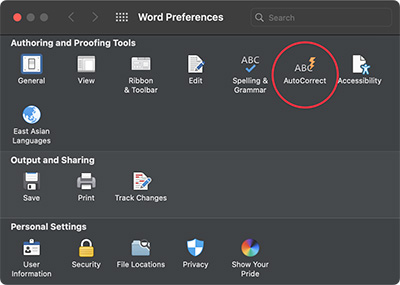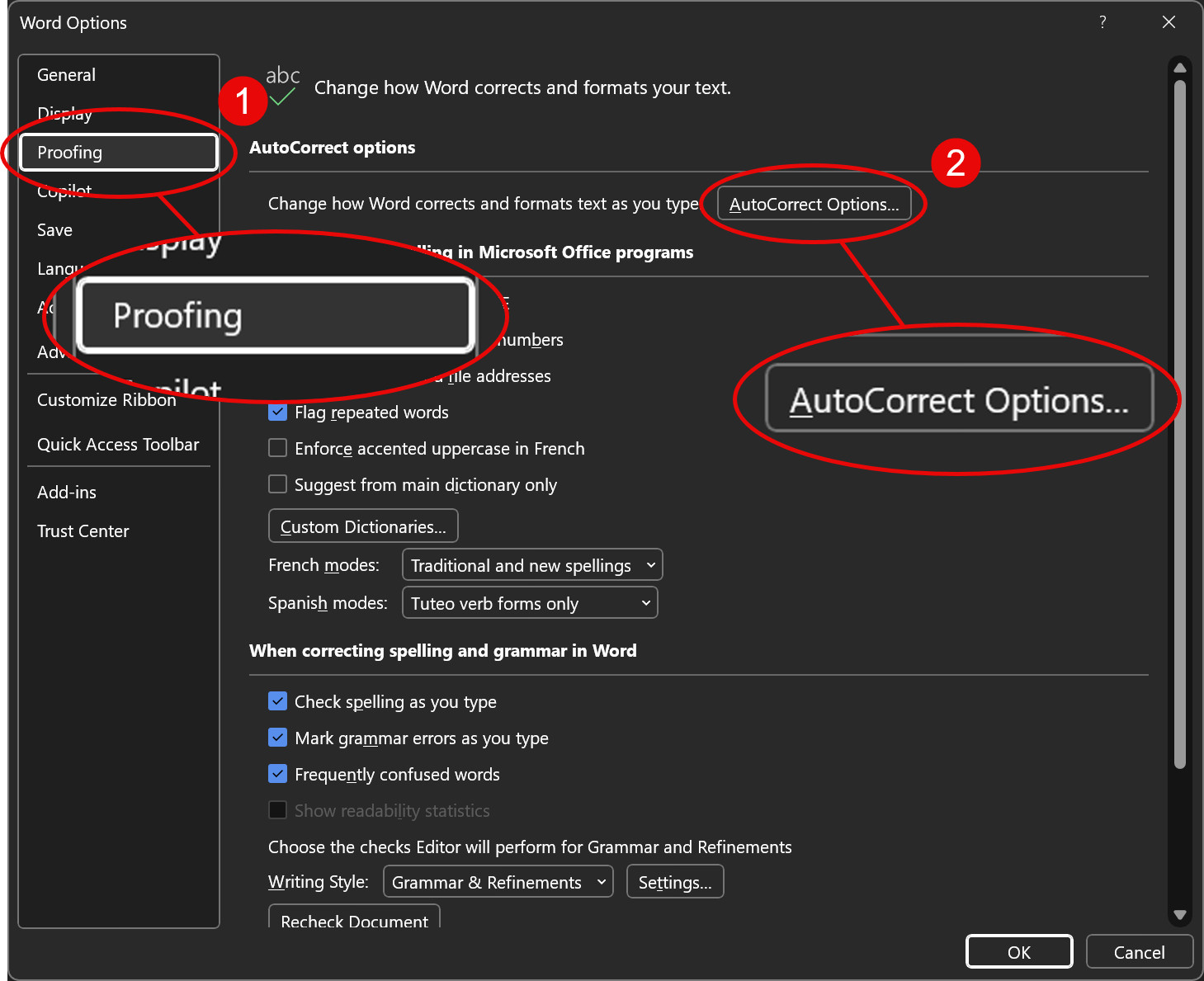So you type for a living and want to get more done in the same amount of time? You could (and probably should) practice your typing, but an easier way to get some quick returns is by using AutoCorrect as a text expansion tool. It is blazing fast, and you can type faster now with limited effort.
Thanks for your interest
This content is part of a paid plan.
Keyboard shorthand?
Text expansion is kind of like modern shorthand but easier to implement than improving your raw typing speed. Just tap fewer keys. How hard can that be?
A few road hazards exist, like overcoming years of typing muscle memory, but text expansion tools also relieve some tedium when typing common text snippets. I’ve used them extensively in work emails and in my writing with character names and common phrases.
Some tools?
The best text expansion tool depends on your platform and preferences. I use two including AutoCorrect in Word and TextExpander for other text-based apps.
Word AutoCorrect
I use Microsoft Word mostly for my writing and editing, so I leverage AutoCorrect to do more than correct spelling errors. I do not usually recommend using a tool for other than its intended purpose; but AutoCorrect is super fast, intuitive, and “free” if you already use Word.
AutoCorrect is not intended to expand large sections of text since it’s limited to 255 characters, but Word provides AutoText for larger text blocks. AutoCorrect also allows formatted text which is useful at times, but it does require a tad more work to create a formatted entry.
Other text expansion apps
If you use other apps like Google Docs or just spend a lot of time with email or a text-based notes app, my other favorite text expansion apps are TextExpander (Windows or Mac) and TextBlaze (mostly Chromium browser based but a Windows desktop beta version exists). These apps allow more complex text expansions than AutoCorrect including date calculations or custom text bits for more general snippets. Managing your snippet library as it grows is also easier than the AutoCorrect dialog allows inside Word. Both are paid apps (neither vendor is an affiliate) but either app is definitely worth the price if you type a lot outside of Word. Some idiosyncrasies exist if you try to leverage them inside Word.
Which one for use outside Word?
TextExpander is more mature and has more feature, but it has a few rough edges. I use it as my main text expansion tool outside of Word since I bounce between Windows and Mac systems. TextBlaze is faster inside Chromium-based browsers (the beta Windows app is currently slow). I like its aesthetic, and it's less expensive than TextExpander. Both apps are easy to use and fast enough for real work (outside of Word).
What I do?
If you start actually thinking about what AutoCorrect entries to add, you may feel a bit confused about where to start. Not that the basic idea is difficult, but what snippets should you start using? Your abbreviations are completely up to your preference, of course, and you can even create them for temporary use. Here is a constructed example for my work in progress:

Basically, just start writing your manuscript. When you hit a snippet of repetitive text you want to abbreviate, create it right then (see below). One entry at a time. As you practice using them, they’ll eventually flow from your fingers as naturally as the full text they’re replacing.
I originally just added them through the regular AutoCorrect dialog, but as my list grew, I transitioned to a more automated approach (more on that later in a separate post). As you get used to using your own text expansions, you’ll probably even find yourself feeling a little restricted when you can’t use them somewhere else like on a web form.
Adding AutoCorrect entries
Word for Mac
The long way to add AutoCorrect entries through the menu is Word → Settings … → AutoCorrect on a Mac.

Word for Windows
In Windows, use File → Options → Proofing and select the AutoCorrect Options … button.

AutoCorrect dialog
On a Mac, the AutoCorrect dialog looks like the following, but the dialog is almost identical in Word for Windows.

They will apply across any Office application that supports them which can be a little annoying in Excel, for example, but you can turn it off in other apps if you wish.
Creating a Quick Launch button
As you build your own little AutoCorrect dictionary, you’ll probably want to access the AutoCorrect dialog faster. You can add an AutoCorrect button to your quick launch menu bar (see customize the Quick Access launch bar on a Mac or on Windows).

Another option is to add a keyboard shortcut to the standard Word command (see the top content of an article in Word for Mac or this video for Windows). I assigned the AutoCorrect dialog to launch with the shortcut Command+Control+Option+Shift+A in Word for Mac, but I actually also assigned it to a Quick Access bar button.
Practice
With all that said, you do have to practice your abbreviations. You need to reprogram years of typing muscle memory, but it’s not the tedious kind of practice required to improve your typing speed to 90+ words per minute. If you mess up, just try the abbreviation again next time. I occasionally actually delete the word and retype the abbreviation to try to reprogram my fingers.
Give it a try. I think you’ll be happy with the results based on a limited up front effort required.
Limitations of AutoCorrect and text expansion
Using Gregg and similar handwritten shorthand systems is like learning to write again. The learning curve is steep, but a proficient user can basically write anything fast. Text expansion has much more manageable learning curve, but some idiosyncrasies exist. These are shared by essentially all text expansion apps by nature of having to work through a computer keyboard. Unfortunately, text expansions aren’t quite as powerful as the older handwritten systems.
On the last point, we can create some regular patterns that make them easier to remember and use. TextExpander also helps with the remembering part since it will remind you of snippets if you type the whole text, but it has a few issues in Word for Windows with keyboard shortcuts that use the Alt key.
AutoCorrect solves the (minor) speed problem and the invalid triggering issue, but it has a few extra limitations compared to other dedicated text expansion apps:
- It doesn’t have any scripting features since it's presented as a spell correction tool.
- It can't nest snippets like some other text expansion apps. That is, every snippet is entirely independent which can lead to redundant text.
- Large libraries of custom snippets are more awkward to manage with the AutoCorrect dialog.
I later ended up creating some Word tables to better organize and track the AutoCorrect entries, but it involved writing several macros to streamline the process which is outside the scope of this post.
Still, AutoCorrect is my preferred text expansion tool because it’s lightning fast and effectively free since I already use Microsoft Word.
Text expansion tips and tricks
You can improve your own little text expansion dictionary using some patterns. Here are some ideas I've developed over time for writing and editing novels. Some abbreviations also apply to work-related text snippets, but that is a different topic.
Obvious
Sometimes an obvious abbreviation presents itself. Not much to say there.
ty → thank you
em → email
idk → I don't know
Variations on the basic idea include using the first letters of syllables:
kb → keyboard
wo → without
Temporary text expansions
Given the limited number of reasonable key combinations, I sometimes create text expansions just for my work in progress. For example, in my current science fiction novel my two main characters are Monica and Harry. I created their names as abbreviations:
mh → Monica and Harry
mo → Monica
h → Harry
The characters lived on a tropical island for a while where there was a central rock formation which they called a monument for lack of a better word, so I further added.
il → island
mon → monument
When I'm writing in the wild west genre, I also add snippets like:
bh → boardinghouse
bw → boardwalk
I use many more abbreviations, but I'm just trying to give you some ideas. These are often temporary for me since bw is also backward in my abbreviation scheme for regular novels, but I write boardwalk enough when writing western fiction that I want that shorthand available while I'm working on a novel in that genre.
Common words
Of course, words we consider common will vary, but this will get you started. For longer words or phrases, I often use the first few letters with some suffixes to allow some control over various verb tenses or plurality for nouns.
Noun patterns
For some common nouns, I’ll define the singular and plural forms like:
sc → shortcut
scs → shortcuts
It doesn’t have to save every possible character if is consistent with the main abbreviation and is easy to remember.
Verb forms
I’ve also created some common compound verbs or phrases along with associated extensions.
ht → have to
gt → going to
cdhv → could have
Contractions
Typing contractions feels clunky to me, so I avoid most of them like so:
dt → don’t
hvt → haven’t
Prepositions and prepositional phrases
bt → between
ooh → on the other hand
fb → followed by
Pronouns
eo → each other
Others
Basically, I target anything I type frequently and/or that has an easy text expansion abbreviation.
bw → backward
misc → miscellaneous
td → today
Personal misspellings
I also target anything I often misspell or find annoying to type, but while I'm fixing it, I might as well make it shorter.
cf → camouflage
btf → beautiful
mnvr → maneuver
Single letter text expansions
One letter text expansions are hard to do in general, but some work well. I’ve set up:
w → with
b → about
n → and
y → you
and a few others that aren’t already a valid one-letter word. For example, I’ve set up
t → the
But I had to create a whole set of contraction text expansions because abbreviations such as “don’t” would expand into “don’the” based on the way AutoCorrect detects the end of a word. This doesn’t bother me much since I already wanted to create the abbreviations for most common contractions. Just be aware of the limitations if you try to over optimize your snippets.



